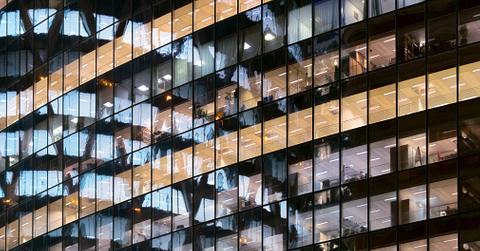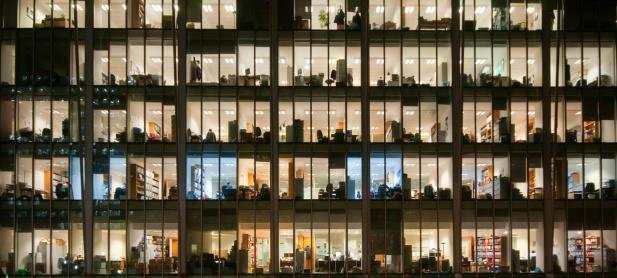This Is How Commercial Buildings Can Cut Nearly One-Third Of Energy Use
It's not a surprise that commercial buildings in the United States use lots of electricity, but it's alarming how much they could cut back on it. An energy department investigation revealed that 29 percent of consumption could be dialed back.
Updated May 26 2019, 3:49 p.m. ET
Commercial and residential buildings total 40 percent of the United States’ energy consumption. It’s not a surprise when walking past buildings at night you see either backup lights on or outdoor lights that pop on to illuminate the building. However, if all these buildings were maintained properly and would take advantage of their built-in efficiency, they could save nearly 30 percent of consumption.
Lots of these buildings are already equipped with up to 34 energy controls that could limit their overall use. This could be anything from cutting off or dimming lights in lesser-used areas, limiting cooling or heating when people aren’t in the room, and many other features. To activate this, all it requires are the settings to be turned on, programmed correctly, and working properly.
Despite the ease of this process, research from the US Energy Department’s Pacific Northwest National Laboratory revealed that many stores, businesses, schools, and more aren’t using these features. This could either be due to them simply not being on or they’ve malfunctioned. Should they all be in operation, it could save 29 percent of energy consumption throughout the United States.
Srinivas Katipamula, one of the report’s authors, explained the situation further: “Most large commercial buildings are already equipped with building automation systems that deploy controls to manage building energy use...But those controls often aren’t properly programmed and are allowed to deteriorate over time, creating unnecessarily large power bills.”
The report focused on six key efficiency measures that could save the most energy. This included lowering temperatures for heat and increasing them for cooling, and most business have the ability to put them on timers. This would be changed when people aren’t in the building as optimal conditions won’t need to continue. For example, on a cool night it wouldn’t need to be as warm in the building.
Needless energy usage can come from issues such as sensors not reading temperatures properly, resulting in more cooling or heating than necessary. People could also make better efforts of turning off computers, monitors, printers, and other machines in the office when leaving. There also doesn’t need to be lights on in the offices if there’s adequate lighting.
While 29 percent is a blanket number on how much these buildings can save, secondary schools were the biggest culprit on the list. Nearly half of their energy consumption could be slashed if these practices were used. Retail stores could cut back on 41 percent of usage. Even buildings deemed as efficient could save up to 19 percent of usage if all their tools were used or programmed properly.
Saving energy consumption falls on people taking more responsibility. It’s up to businesses and schools to make sure that efficiency protocols are running smoothly. People can also be a little more aware of their surroundings and make sure needless lights are off and machines are turned off when not in use. All of us doing more could save nearly a third of the country’s total energy consumption.

